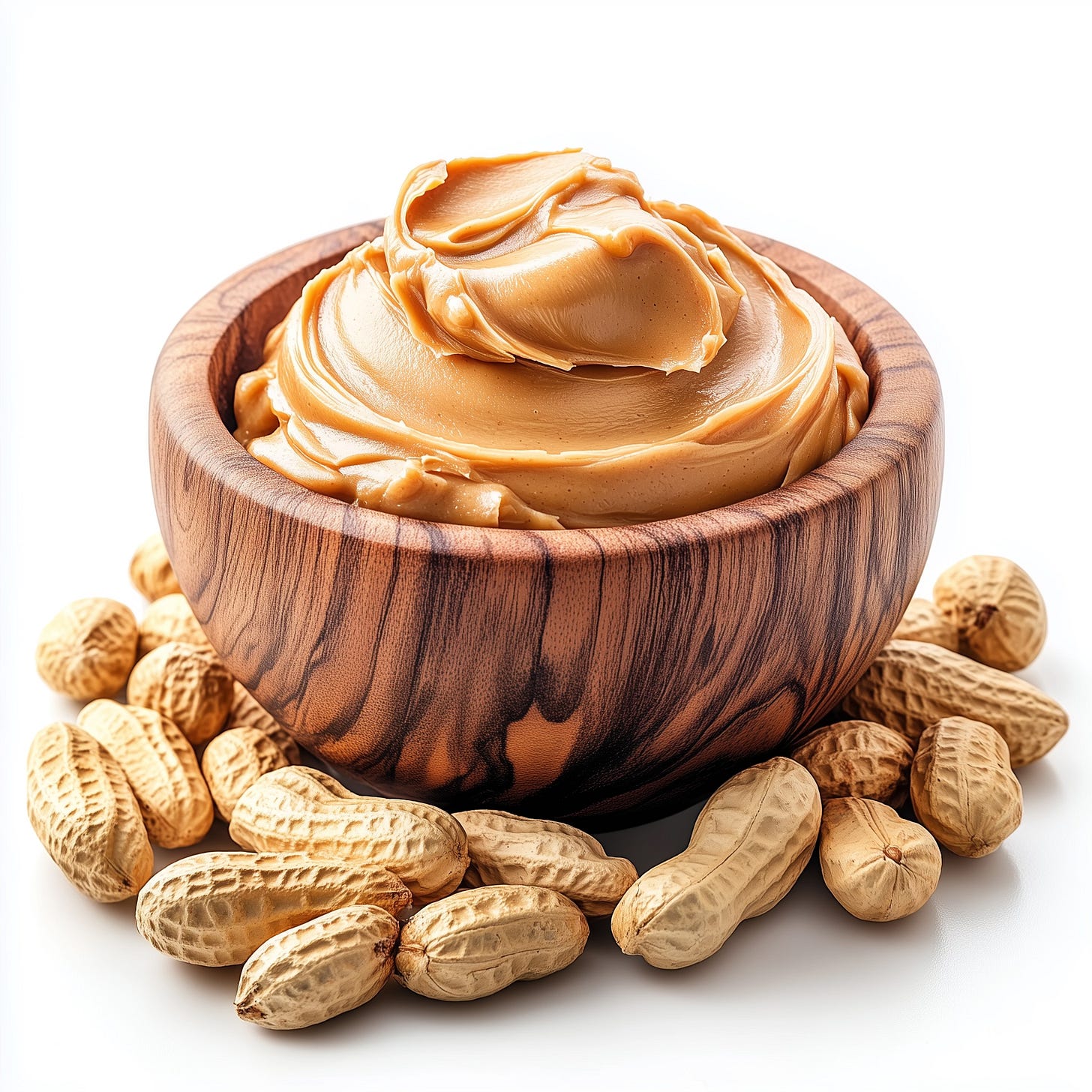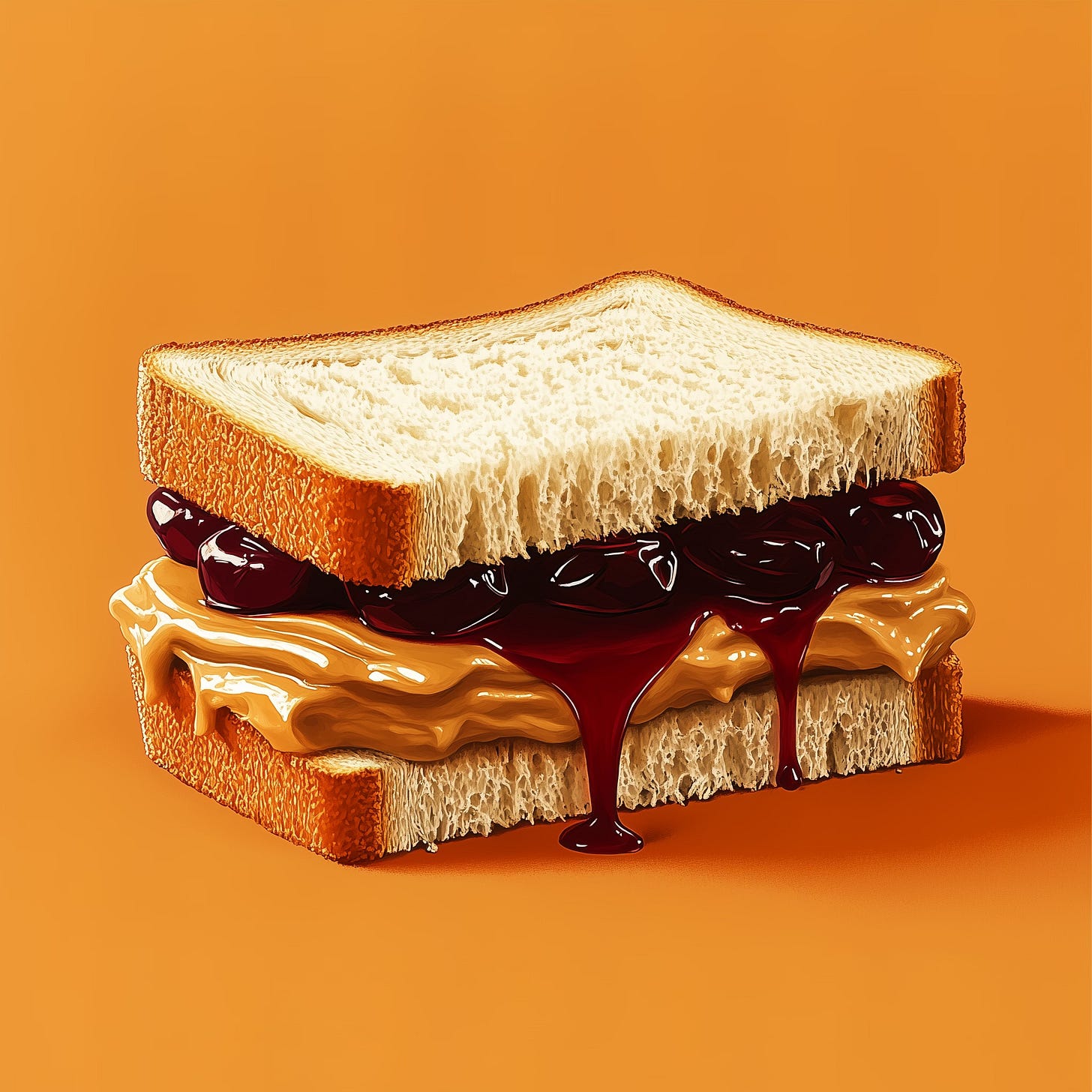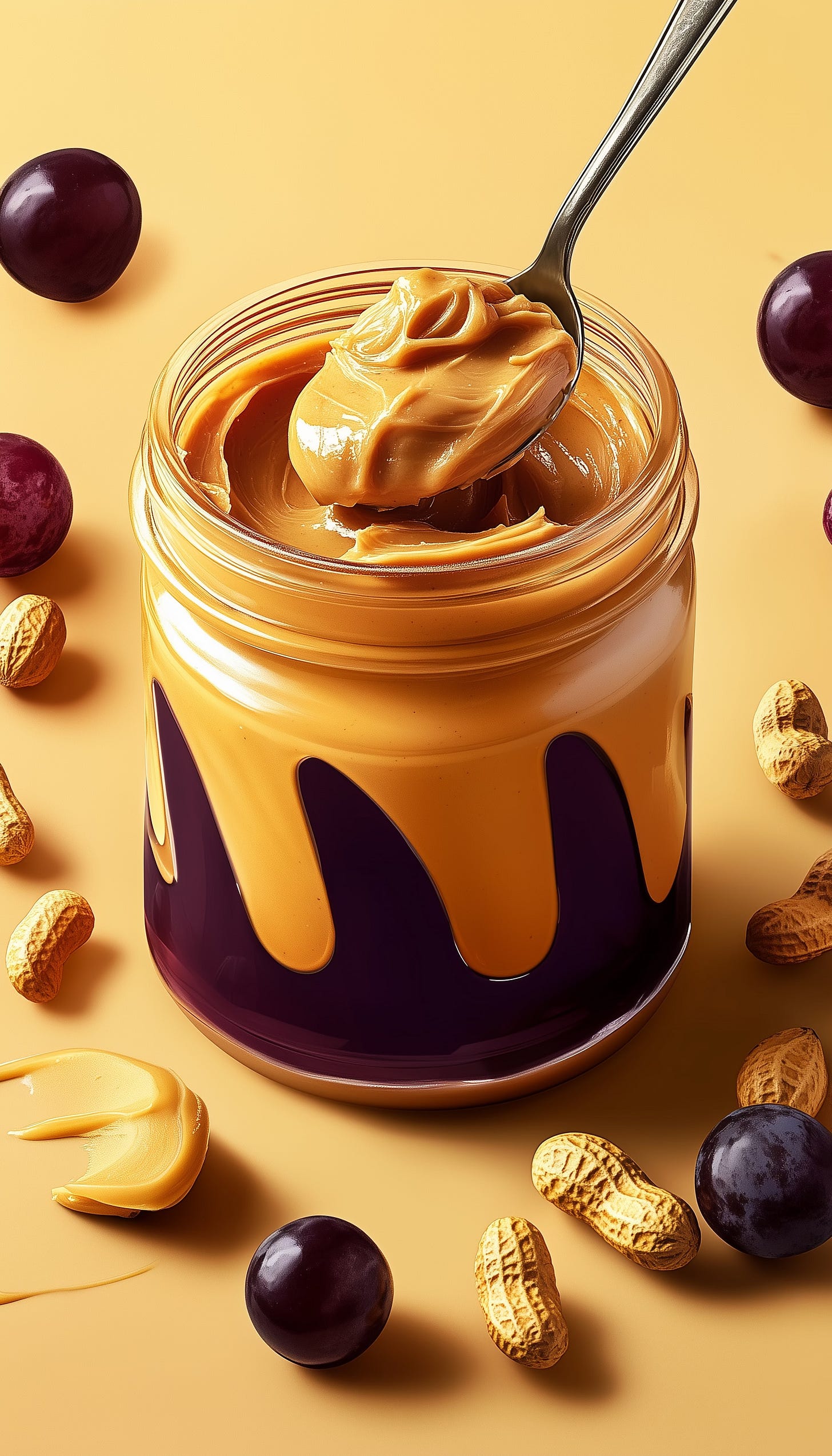Peanut butter isn’t just a delicious, creamy, or crunchy delight—it’s also packed with health benefits that make it a nutritional powerhouse. As someone who grew up enjoying peanut butter and jelly sandwiches, I’ve always had a soft spot for this beloved spread. I especially loved Smucker’s Goober, the brand that conveniently swirled peanut butter and jelly together in one jar, making it even easier to enjoy. In honor of National Peanut Butter Lover’s Day, let’s dive into the history, cultural significance, health benefits, and even how to grow your own peanuts and make your own peanut butter!
A Brief History of Peanut Butter
Peanut butter has a rich history dating back thousands of years. The ancient Aztecs and Incas ground roasted peanuts into a paste, making an early version of what we now recognize as peanut butter. However, the modern version was popularized in the late 19th century. Dr. John Harvey Kellogg, known for his contributions to the health food movement, patented a process for making peanut butter in 1895 as a protein-rich food for patients who had difficulty chewing meat.
In the early 20th century, peanut butter became a staple in American households, particularly during the Great Depression and World War II, when it provided an affordable, high-protein food source. It has since become a symbol of comfort food and childhood nostalgia, with peanut butter and jelly sandwiches standing as a classic lunchbox favorite.
5 Health Benefits of Peanut Butter
Rich in Healthy Fats and Protein
Peanut butter is packed with monounsaturated and polyunsaturated fats, which are beneficial for heart health. Additionally, it contains about 8 grams of protein per two-tablespoon serving, making it a great plant-based protein source.Supports Heart Health
The healthy fats found in peanut butter help lower bad cholesterol (LDL) and increase good cholesterol (HDL), reducing the risk of heart disease. Studies have shown that regular peanut consumption may contribute to cardiovascular health.Aids in Weight Management
Despite its calorie density, peanut butter can be helpful in weight management. Its combination of protein, fiber, and healthy fats promotes satiety, keeping hunger at bay and reducing the likelihood of overeating.Provides Essential Vitamins and Minerals
Peanut butter is a good source of important vitamins and minerals, including vitamin E (an antioxidant), magnesium (which supports muscle and nerve function), and potassium (which helps maintain healthy blood pressure).Boosts Energy Levels
The combination of protein, healthy fats, and complex carbohydrates in peanut butter provides long-lasting energy, making it a great snack before a workout or a busy day.
The Symbolism and Cultural Relevance of Peanut Butter
Peanut butter has become more than just a spread—it’s a symbol of comfort, nourishment, and childhood nostalgia. In many cultures, peanut butter is associated with resilience and resourcefulness, as it has been a reliable food source through tough economic times. It also represents togetherness, as peanut butter and jelly sandwiches have been a bonding experience for many families across generations.
Beyond sandwiches, peanut butter is a versatile ingredient found in a variety of dishes, from Thai peanut sauces to energy bars, cookies, and smoothies. Its universal appeal and affordability have made it a staple in many households worldwide.
Tips for Growing Your Own Peanuts
If you love peanut butter, why not try growing peanuts yourself? Here are some simple steps to cultivate your own peanut plants:
Choose the Right Variety: Look for Valencia or Virginia peanuts, which are great for home gardening.
Plant in Warm Soil: Peanuts thrive in well-drained, sandy soil with plenty of sunlight. Plant seeds about 1-2 inches deep once the danger of frost has passed.
Provide Room to Grow: Space plants about 8 inches apart in rows that are 24 inches apart.
Encourage Pegging: After flowering, the plant sends pegs (stems) into the soil where the peanuts will develop underground.
Harvest in Late Summer or Early Fall: Peanuts are ready to harvest when the plant starts to yellow. Gently pull the plant from the soil and let it dry before removing the peanuts.
How to Make Your Own Peanut Butter
Making homemade peanut butter is simple and allows you to control the ingredients to your preference. Here’s an easy recipe to try:
Ingredients:
2 cups roasted peanuts (unsalted or lightly salted)
1-2 tablespoons peanut oil (optional, for smoother consistency)
1-2 teaspoons honey or sugar (optional, for sweetness)
A pinch of salt (if using unsalted peanuts)
Instructions:
Add the roasted peanuts to a food processor or high-powered blender.
Blend for 1-2 minutes until the peanuts break down into a crumbly mixture.
Continue blending, stopping occasionally to scrape down the sides.
If needed, add peanut oil gradually to achieve your desired consistency.
For a sweeter peanut butter, add honey or sugar and blend again.
Store in an airtight container and refrigerate for freshness.
Celebrate Peanut Butter Lover’s Day
Whether you enjoy it spread on toast, blended into a smoothie, or straight from the jar, today is the perfect day to celebrate peanut butter. Take a moment to appreciate its rich history, health benefits, and the simple joy it brings to every bite.
How do you enjoy your peanut butter? Are you team creamy or crunchy? Let me know in the comments below!







